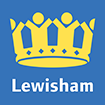Lewisham Characterisation Study
Overview
Allies and Morrison Urban Practitioners were commissioned by the Council in February 2018 to prepare the Lewisham Characterisation Study. The study updates the previous 2010 Characterisation Study and responds to the significant growth and change in the borough since this time.
The study sets out the description of the physical form of the borough, its history, places, streets and buildings. It provides an understanding of the particular attributes which make the borough what it is today, highlights how the places of the borough have differences in their character and how this local distinctiveness might inform how to manage growth and change.
Much of the study contains objective, expert evidence about the borough's character and growth. However, through its evolution, the study has involved a number of engagement events with stakeholders. Some parts of the study start to look at the best locations for accommodating growth, taking a borough wide view to inform the local plan.
Why your views matter
The purpose of this consultation is to gather a wide range of views and opinions on the Lewisham Characterisation Study (attached for download below). Once responses have been considered, they will be reported within a separate document ('Responses to the Characterisation') and any necessary changes will be made to the study. Following that, the final study will be reported back to the Sustainable Development Select Committee. The 'Responses to the Characterisation' document and the study will then inform the Local Plan.
Please ensure you have read the study (particularly chapters 5-10) before answering the questions on the following page.
Areas
- Bellingham
- Blackheath
- Brockley
- Catford South
- Crofton Park
- Downham
- Evelyn
- Forest Hill
- Grove Park
- Ladywell
- Lee Green
- Lewisham Central
- Perry Vale
- Rushey Green
- Sydenham
- Telegraph Hill
Audiences
- Businesses
- Children and young people
- General public
- Lewisham residents
- Professional stakeholders (e.g. teachers, GPs, police etc.)
- Voluntary and community groups
Interests
- Arts and culture
- Business and local economy
- Environment
- Housing and homelessness
- Parks and open spaces
- Planning
- Regeneration
- Sport and leisure
- Transport and traffic

Share
Share on Twitter Share on Facebook